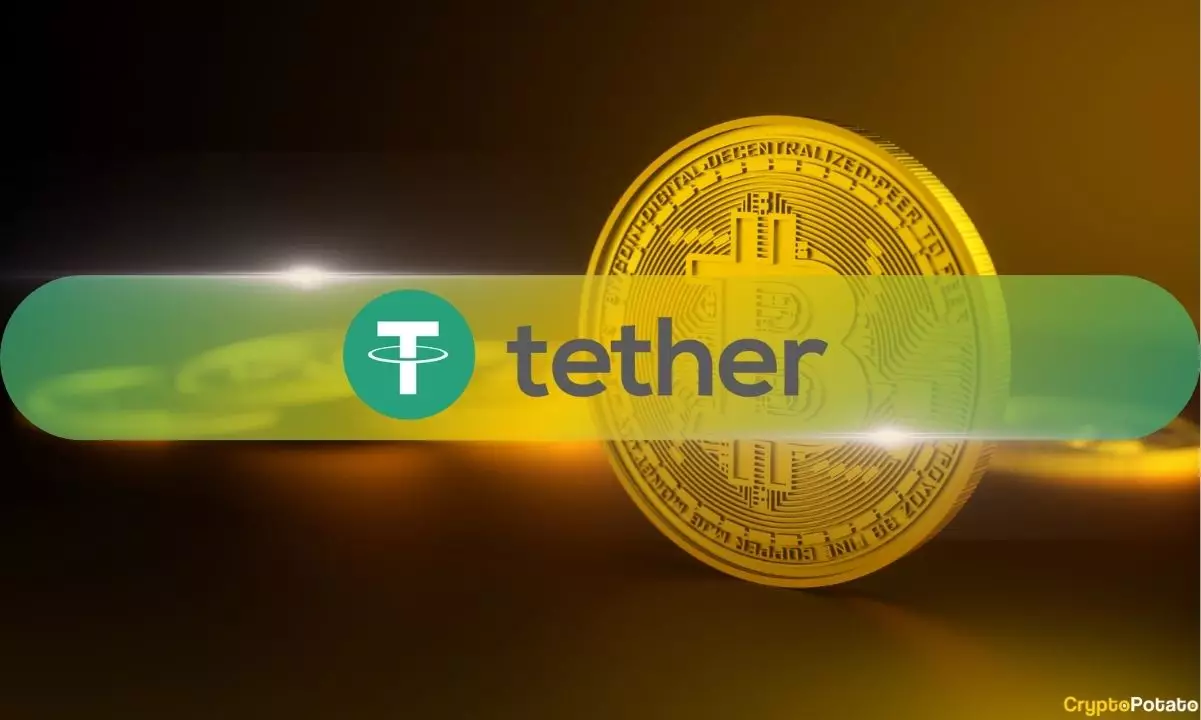Tether, recognized as the foremost issuer of stablecoins, has recently bolstered its Bitcoin reserves by acquiring an impressive $700 million worth of the cryptocurrency. This strategic maneuver aims to strengthen its asset backing in the face of heightened scrutiny regarding USDT’s position, particularly in Europe, where the implementation of the Markets in Crypto Assets (MiCA) regulation has raised numerous questions. Paolo Ardoino, Tether’s CEO, has actively engaged with the community to mitigate the growing fear, uncertainty, and doubt (FUD) revolving around USDT’s legal standing in the European market.
On December 30, 2024, Tether transferred 7,629 BTC from the hot wallet of its affiliate exchange, Bitfinex, to its corporate reserve account, as reported by Arkham Intelligence. This significant transaction marks Tether’s largest addition to its Bitcoin stash since March 2024 when an even larger transfer occurred with 8,888.88 BTC. These transactions not only reflect Tether’s commitment to enhancing its crypto reserves but also indicate a trend of increasing confidence in Bitcoin as a reliable asset.
Navigating Regulatory Challenges
The backdrop of this Bitcoin acquisition is Tether’s ongoing efforts to address potential regulatory hurdles stemming from the MiCA framework. Effective from the end of December 2024, MiCA aims to bring uniformity and transparency to cryptocurrency operations across the EU. However, this development has spurred concerns that USDT might be at risk of delisting from European exchanges, stemming from perceptions of Tether’s alleged non-compliance with regulatory requirements. This apprehension has resulted in a notable decline in USDT’s market capitalization, shedding over $3 billion in value over a week, representing its most substantial dip in a year of steady growth.
Despite these challenges, Ardoino has been vocal about Tether’s resolve and the safety of its assets. In a recent social media post, he reassured stakeholders that USDT remains a safe investment, calling out misinformation that may be fueling market anxiety. His assertion is partly a counter-response to competitors who might seek to capitalize on Tether’s uncertain standing.
Diversifying Investment Strategy
Beyond its immediate response to regulatory pressures, Tether’s broader strategy includes diversifying its investments and creating alternative revenue streams. The company has pledged to allocate up to 15% of its net operating profits to Bitcoin purchases, a reflection of its long-term confidence in the cryptocurrency. This strategic choice is complemented by investments in several emerging sectors, including artificial intelligence, Bitcoin mining, and decentralized communication technologies.
By diversifying its portfolio, Tether aims not only to hedge against regulatory challenges but also to position itself favorably in the evolving financial landscape. The recent transaction, although born out of necessity to affirm USDT’s reliability, ultimately aligns with a calculated approach to fortify Tether’s market role in a rapidly changing environment.
As Tether navigates the turbulent waters of regulatory scrutiny and market volatility, its recent Bitcoin acquisition stands as a testament to its resilience in the face of challenges. The firm’s ability to adapt and employ strategic decision-making will be crucial as it strives to maintain its dominance in the stablecoin market while ensuring compliance with upcoming regulations in Europe. How this situation unfolds will undoubtedly dictate Tether’s trajectory and influence broader market sentiment toward stablecoins in the years to come.















